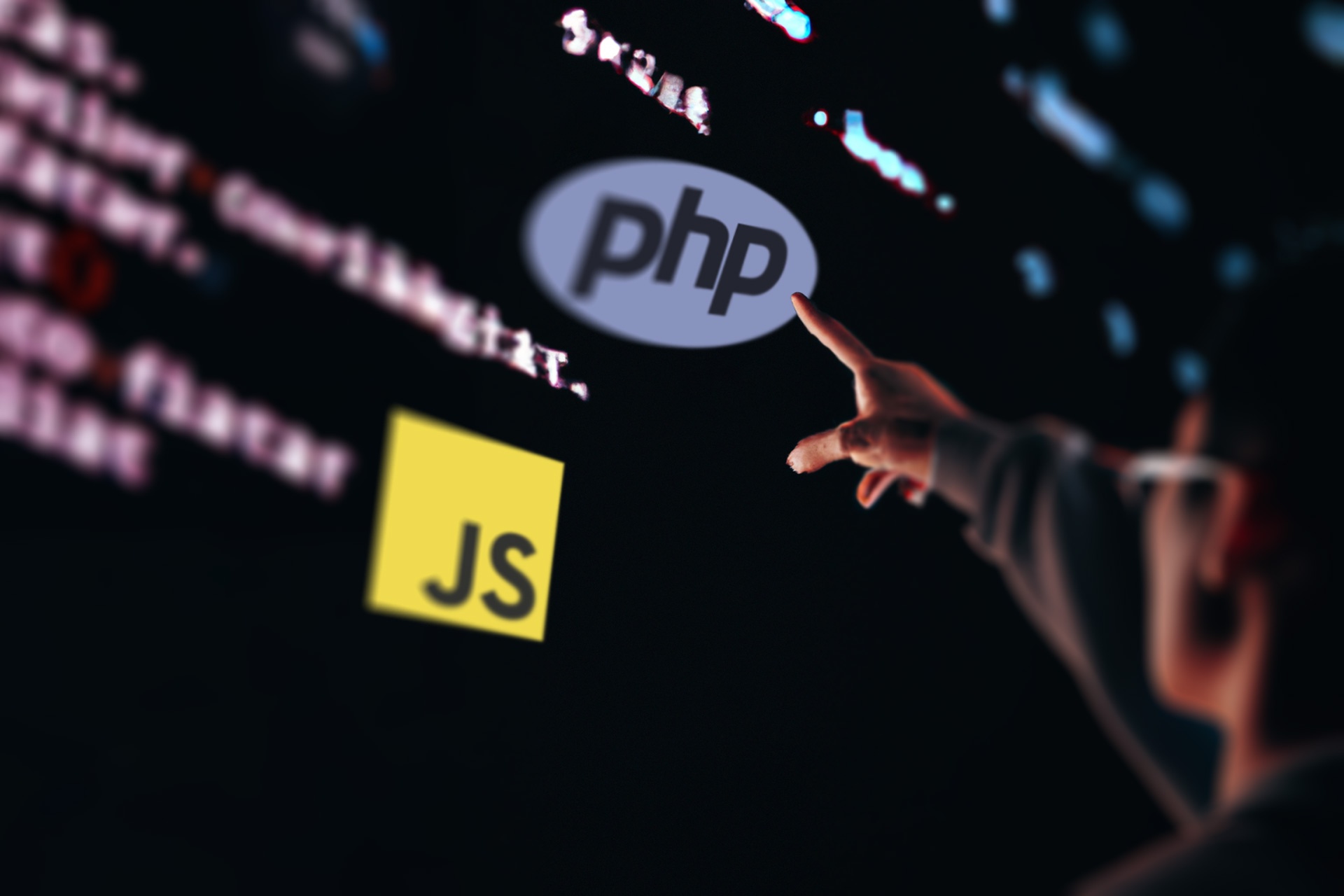What is PHP?
PHP- Hypertext Preprocessor is aserver-side scripting language. Web pages that are dynamic and interactive are created with PHP. The PHP code has a set of rules, is linked to the HTML file or embedded in the HTML code, and contains clear instructions for the start and end of processing. The PHP code is executed on the server before it is converted to HTML and sent to the client.
The results of the script execution are returned to the client, in this case the browser, but the underlying code remains hidden.
PHP can process forms, store data in a file, return data to the user, retrieve data from files, etc.
Example:
A website where the user can check the status of their order after logging in. Using PHP coding, a request is sent to the database, which then displays the information specific to the user, depending on the information available in the database.
Since PHP is open source, it can run on most operating systems available today such as Windows, Mac OS, Linux or UNIX etc. PHP is very easy to learn and use.
PHP instances
- Content Management Systems (CMS) such as Word Press, Drupal, Joomla, etc.,
- Servers such as SQL, MariaDB, SQL, Postgresql, Sybase, etc.
What is JavaScript?
JavaScript is one of the most popular and widely used scripting languages in the world.
Originally used to create interactive web pages, today it can also be used to create weband mobile applications, real-time applications and games. Because it is a client-side programming language, it runs in the browser. The advantage of JavaScript is that it requires less interaction with the server, so you can validate user input before the page is sent, which means less server load and less server traffic. JavaScript allows instant feedback to visitors.
Example:
If you move the mouse pointer over the menu bar of the website, the drop-down effect is generated by JavaScript.
JavaScript instances
- Front-end technologies such as Angular JS, JQuery, Ember js, Backbone.js, Reactjs, etc.
- Server-side technologies such as MongoDB, Node.js, Express.js, etc.
PHP and JavaScript - differences
Similarities between PHP and JavaScript
When should you use PHP and when should you use JavaScript?
When choosing the right backend technology, you should consider the following points:
Choose PHP as the backend language if your project includes the following:
- Solution packages such as LAMP(Apache, Linux, MySQL, PHP)
- CMS such as Drupal, WordPress, Joomla etc.
- Servers such as PostgreSQL, MariaDB, Oracle, Sybase, etc.
Select JavaScript if your project contains the following:
- Frontend technologies such as Angular js, React js, Backbone.js, Ember.js, etc.
- SPAs (Dynamic Single Page Applications)
- Server technologies such as MongoDB, Express.js, Node.js, etc.
- Solution packages such as MEAN(Express js, Angular js, MongoDB, etc.)
When comparing PHP and JavaScript, PHP scores highly due to its open-source availability and simplicity. Instead of comparing these languages, it is better to combine PHP and JavaScript to benefit from the advantages of both languages.
Example
Here is a simple example of an algorithm for finding the largest element in an array, implemented in both PHP and JavaScript :
PHP:
<?php
function findLargest($arr) {
$largest = $arr[0];
foreach ($arr as $value) {
if ($value > $largest) {
$largest = $value;
}
}
return $largest;
}
$array = [5, 2, 9, 1, 5];
$result = findLargest($array);
echo "Das größte Element im Array ist: " . $result; // Ausgabe: "Das größte Element im Array ist: 9"
?>JavaScript:
function findLargest(arr) {
let largest = arr[0];
for (let i = 1; i < arr.length; i++) {
if (arr[i] > largest) {
largest = arr[i];
}
}
return largest;
}
const array = [5, 2, 9, 1, 5];
const result = findLargest(array);
console.log("Das größte Element im Array ist: " + result); // Ausgabe: "Das größte Element im Array ist: 9"Both versions of the algorithm achieve the same result: they find the largest element in a given array.
Which language is better depends on your use case:
-
PHP is server-side and is used for processing data on the server. It is well suited for tasks such as database queries, generating HTML pages and processing form data.
-
JavaScript is executed on the client side in the web browser and enables interaction with the user interface. It is the preferred language for front-end web development and enables responsive user interfaces and the creation of web applications.
The choice between PHP and JavaScript depends on the requirements of your project. In many cases, they are used together in a full-stack web development environment, where PHP is used on the server and JavaScript in the browser to create a complete web application.
Conclusion
The PHP vs. JavaScript duel has no clear winner. Both scripting languages have their strengths and weaknesses and are suitable for different tasks. Depending on the project, the choice may fall on PHP or JavaScript. Both are logically structured, have a large community and offer many possibilities. Whether PHP or JavaScript is more suitable depends on the respective project requirements. While PHP is easier to learn and is considered very secure, JavaScript impresses with its combination options and high speed. So in the end it is a peaceful draw.



